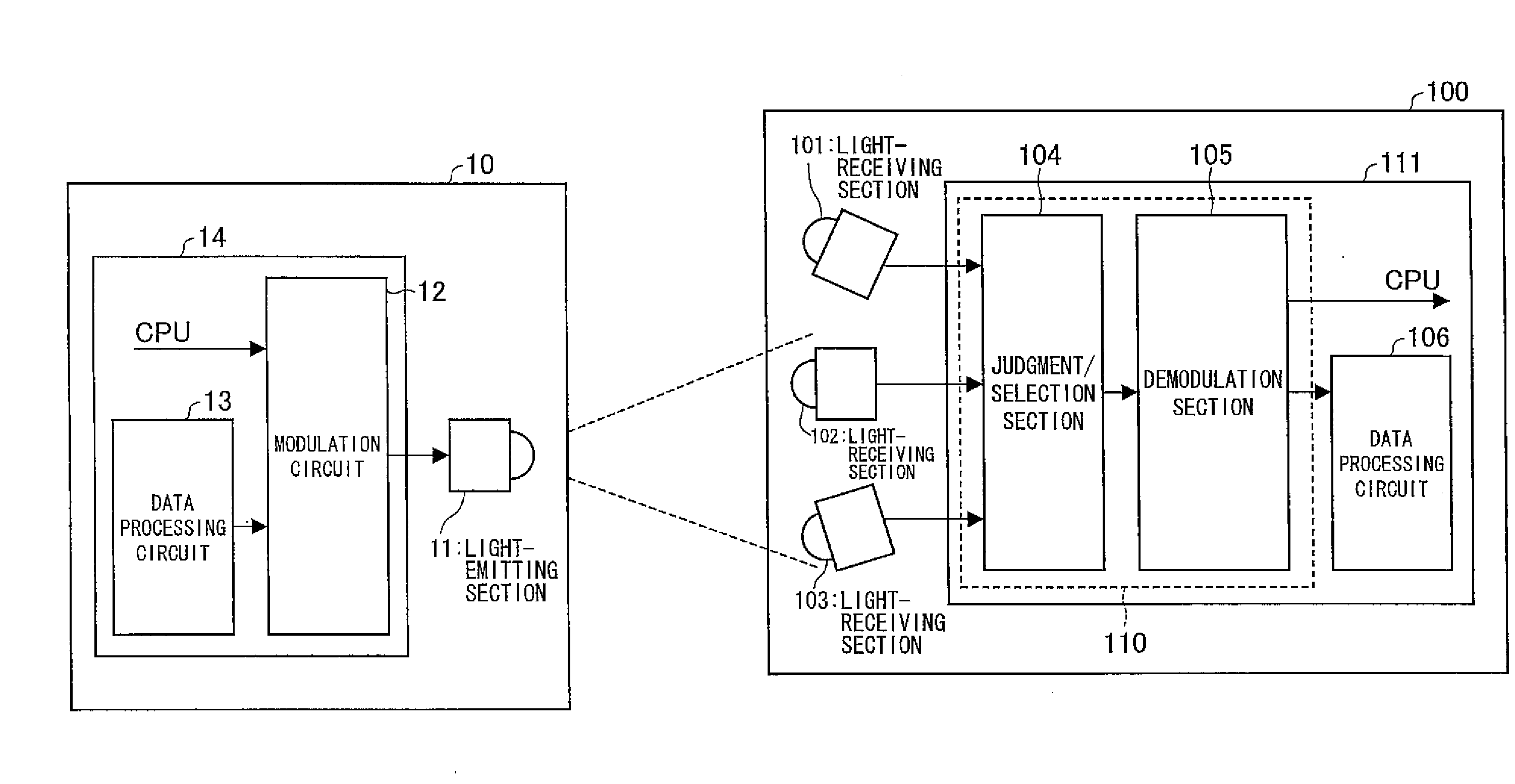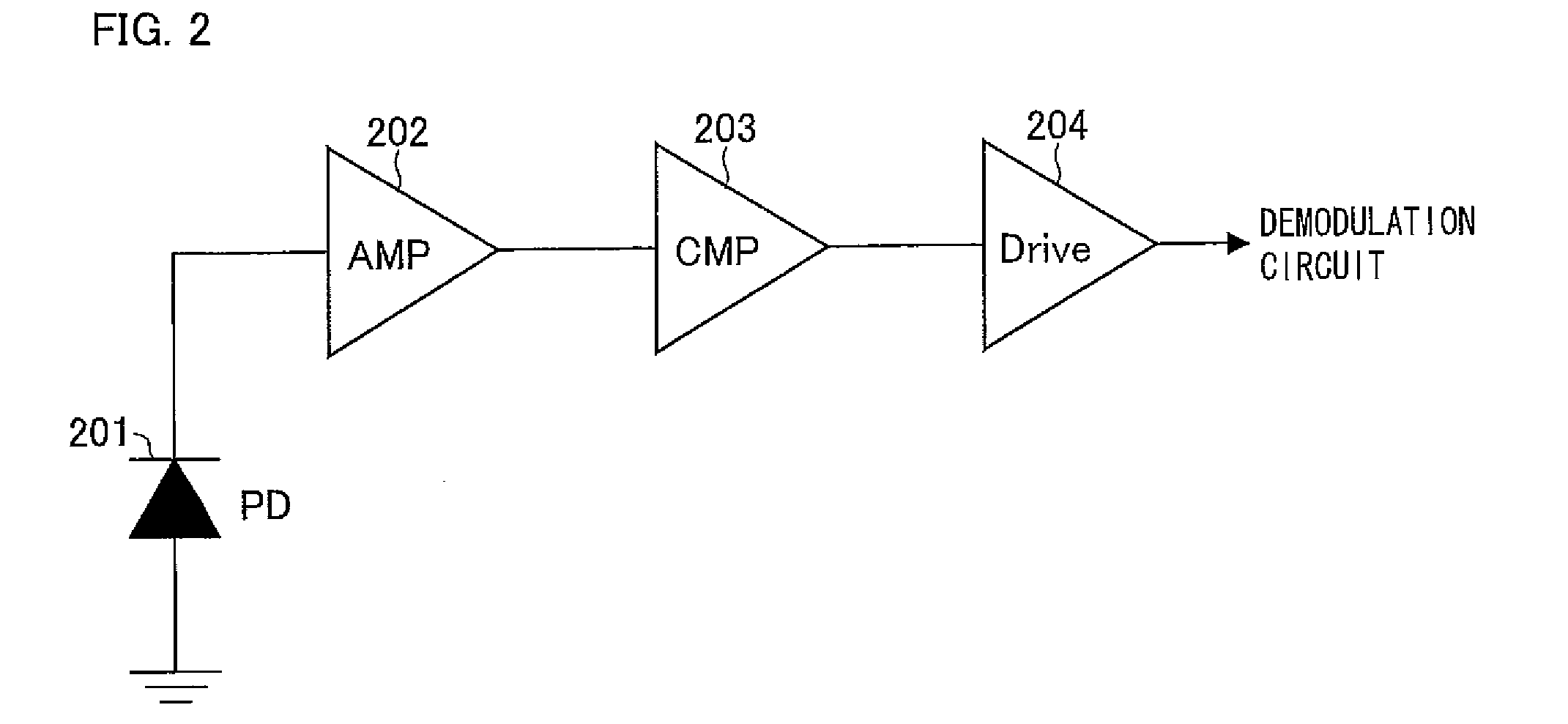Demodulation circuit, ic, and communication device
a demodulation circuit and communication device technology, applied in the field of demodulation circuits, ic and communication devices, can solve the problems of large size, large amount, and large electric current consumption of led
- Summary
- Abstract
- Description
- Claims
- Application Information
AI Technical Summary
Benefits of technology
Problems solved by technology
Method used
Image
Examples
embodiment 1
[0045]The following explains an embodiment of the present invention with reference to FIGS. 1 to 7. FIG. 1 is a block diagram showing communications between a transmitter 10 and a receiver 100 including light-receiving sections 101 to 103. The transmitter 10 and the receiver 100 include user interfaces such as a display section and an operation section, CPUs, and memories which are irrelevant to the subject matters of the present invention and therefore are omitted in the drawings.
[0046]The transmitter 10 and the receiver 100 in the following explanation include an optical communication function. A general communication method using an infrared ray (e.g. IrDA) is used in the present embodiment. However, the present invention is not limited to this. The present invention is applicable to optical communication methods for visible light communications using light other than an infrared ray, and to wireless communication methods using radio waves having high directivity.
[0047]With refer...
embodiment 2
[0166]With reference to FIGS. 8 to 12, the following explains another embodiment of the present invention. Note that, structures other than those explained in the present embodiment are the same as those in Embodiment 1. For convenience of explanation, members having the same functions as those illustrated in drawings of Embodiment 1 are given the same reference numerals and explanations thereof will be omitted here.
[0167]In Embodiment 1, an explanation was made as to a case where the light-receiving section 101 receives very weak light as illustrated in FIG. 1. In the present embodiment, it is assumed that the light-receiving section 101 does not receive an optical signal at all. At that time, as no signal is supplied, the gain of the amplifier 202 of the light-receiving section 101 is at the maximum.
[0168]Consequently, there is a case that even a little disturbing noise (such as an electric noise from a device, a variation in power source voltage, and a little change in disturbing...
PUM
 Login to View More
Login to View More Abstract
Description
Claims
Application Information
 Login to View More
Login to View More - R&D
- Intellectual Property
- Life Sciences
- Materials
- Tech Scout
- Unparalleled Data Quality
- Higher Quality Content
- 60% Fewer Hallucinations
Browse by: Latest US Patents, China's latest patents, Technical Efficacy Thesaurus, Application Domain, Technology Topic, Popular Technical Reports.
© 2025 PatSnap. All rights reserved.Legal|Privacy policy|Modern Slavery Act Transparency Statement|Sitemap|About US| Contact US: help@patsnap.com



